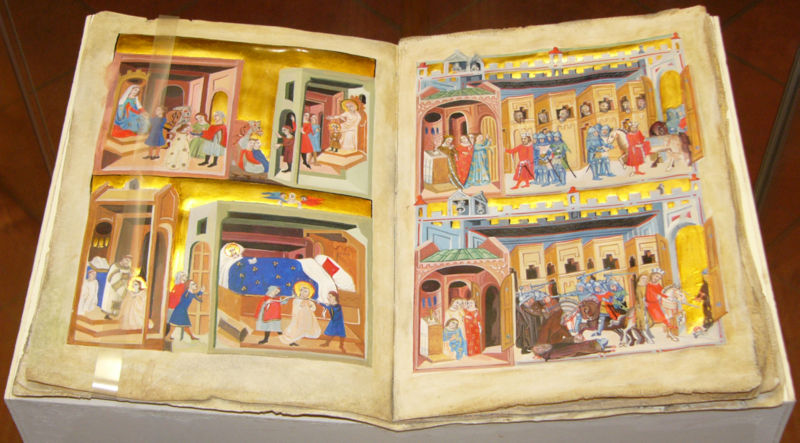Traditional arts in Latvia are generally centered
around crafts and craftwork. These crafts can be broadly divided between the
ones that women generally do and the ones that men handle. Craft art such as
textiles, embroidery, pottery, weaving, and other types of needlework were
generally done by women. Men also do pottery, but they also handle heavier
hands-on work such as woodworking and blacksmithing. Although the traditional
arts aren’t quite as encouraged as they used to be, there is still quite a
following by those who want to keep these old Latvian crafts alive. Today,
these types of handicrafts and woodworking products are produced for arts fairs
and tourist shops.
Latvia is also known for its architecture. The Old
City section of Riga is picturesque in its closely built multicolored
buildings. The German-influenced Romanesque and Gothic cathedrals and castles
gives the city center the feeling of stepping back into time. Many of the older
homes were completely wooden; foreigners moving into the area introduced them
to masonry techniques. They’re also widely known for their Art Nouveau style of
architecture with its characteristic ornamental flowers, faces, swirls, and
curls.
After Latvia gained its independence, one of the
first things they did was to establish a Cultural Foundation. This foundation
saw to the promotion of Latvian arts and also provided financial assistance
toward artists and art schools, galleries, and events. The arts were one of the
key things they used to help solidify their identity as a Latvian people.
However, when the Russians moved in and took over,
the communist government kept a close eye on the artists. Because artists are
such scary people, right? Their works were heavily censored and had to promote
a sense of nationalism per the views of the Russian government and philosophy.
When the country regained its independence once more, the arts were able to
freely flourish again. Today, Latvian artists spread the gamut of all
mediums—from painting to sculpture to photography to contemporary art displays.
.jpg) |
| by Igor Maikov |
Latvian literature is mostly written in either
Latvian or Latgalian. In the earliest days, stories and folk songs were passed
down generation to generation by word of mouth. Written literature didn’t
really become popular or a widely practiced art until about the 19th
century. The works of literature were mostly poetry. Many of the Baltic-German
members of the upper crust viewed the Latvian language as the language of
peasantry, which partly influenced Juris Alunans to write his work entitled Songs. Not long after this, Andrejs
Pumpurs produced the classic epic poem called Lacplesis.
The 20th century saw many changes in
literature, but it was mainly reflecting the turmoil and the social-political
changes taking place around them. Themes surrounding Latvian nationalism seem
to be the core topic in poetry, prose, and drama. During Latvia’s first bout of
independence, literature took on the modernity that rivaled other parts of
Europe. Poverty and the seedier sides of life were often romanticized in such
as way to make it seem almost desirable. Or at least recognizable and familiar.
Some of the writers popular from this period include Aleksandrs Caks, Eriks Adamsons, Linards Tauns, and Gunars Salins.
Writers suffered during the Soviet years. Their
works were by far more scrutinized and censored. And many writers who were
deemed as a threat to the Soviet government (or the possibility of a threat) were
sent out to the emptiness of Siberia. This caused many Latvian writers to flee
the country to friendlier places such as Stockholm, London, other areas of
Europe, and the U.S. (particularly, New York). Many of these writers wrote
about their experiences in respect to their views on the political scene. Not
all writers left; there were many who stayed. Notable writers during this
period include Ojars Vacietis, Vizma Belsevica, Knuts Skujenieks, Imants Ziedonis, Klavs Elsbergs, and Mara Zalite. There were also a group of Latgalian
writers who write in Latgalian in order to keep the language alive. Every year,
this group of Latgalian writers publish their works, mainly through the same
publishing house, and the best of their work is published in the Latgalian
Literary almanac.
Up next: music and dance















